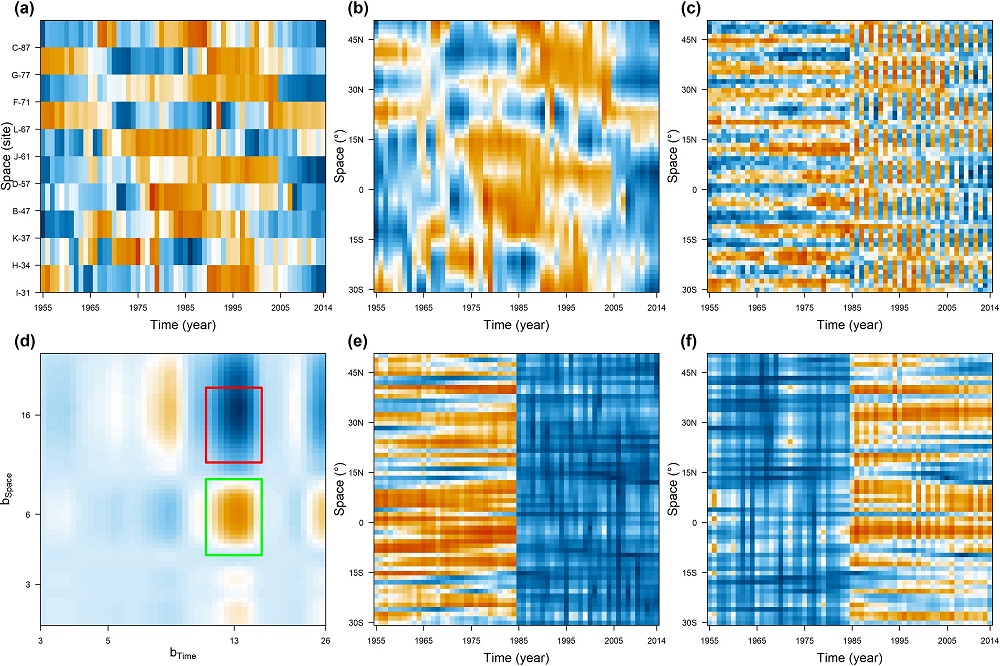New progress in the spatiotemporal scale analysis of species dynamics
Scale effects significantly affect the rationality and accuracy of ecological models, which are crucial for understanding the temporal dynamics and spatial dependencies of research objects and ecological processes. With the advancement of intelligent monitoring technology, measuring and accumulating spatiotemporal data has become increasingly feasible, providing opportunities to reveal the spatiotemporal variation characteristics of biodiversity. However, this also presents new challenges for analyzing such data. Currently, few studies simultaneously analyze and compare the changing patterns of populations or communities across temporal and spatial scales, highlighting the necessity of exploring their synchrony characteristics at spatiotemporal scales.
The research results, titled "Coupled space-time scale analysis for obtaining enhanced accuracy in species dynamics" have been published in the international ecology science journal Ecological Informatics. https://doi.org/10.1016/j.ecoinf.2024.102776. Dr. Zhangqi Ding, a postdoctoral fellow at the South China Botanical Garden, is the first author of the paper, while the corresponding author is Professor Zhanfeng Liu, the research group leader.

Figure. Features of the Rajiformes fishery catch data after modification.
File Download: